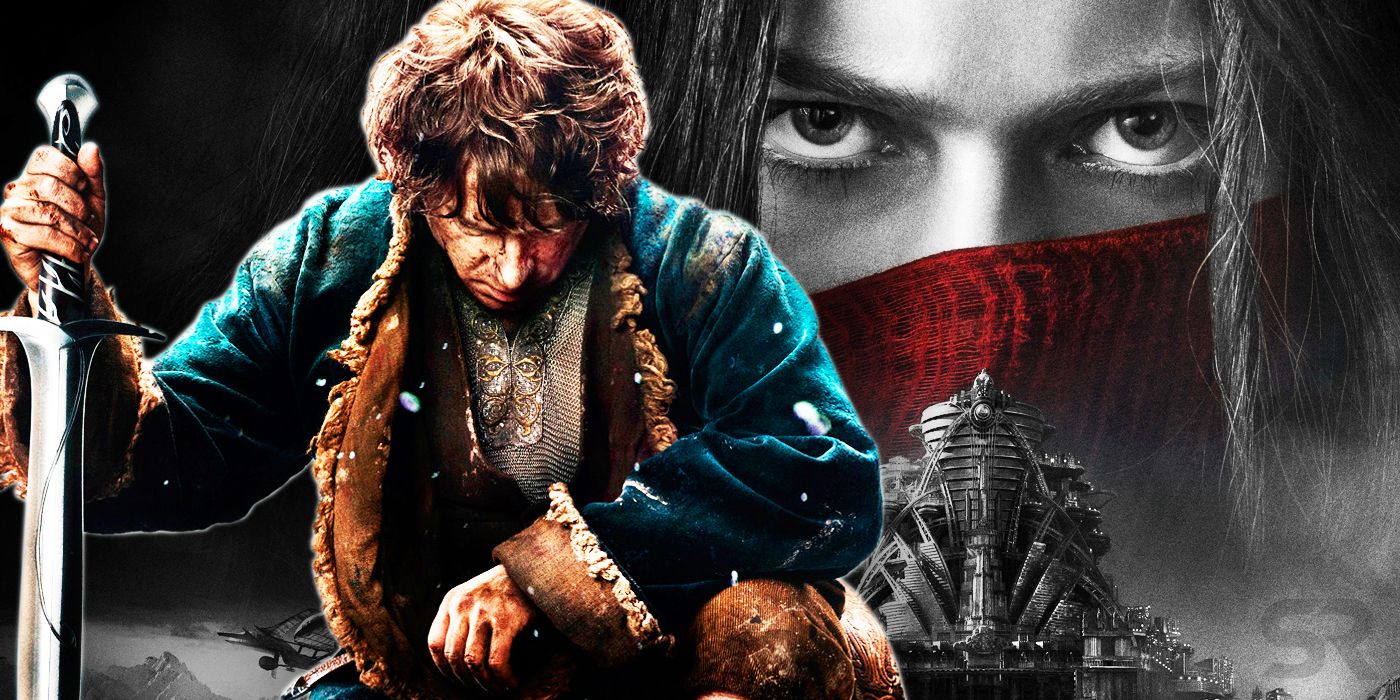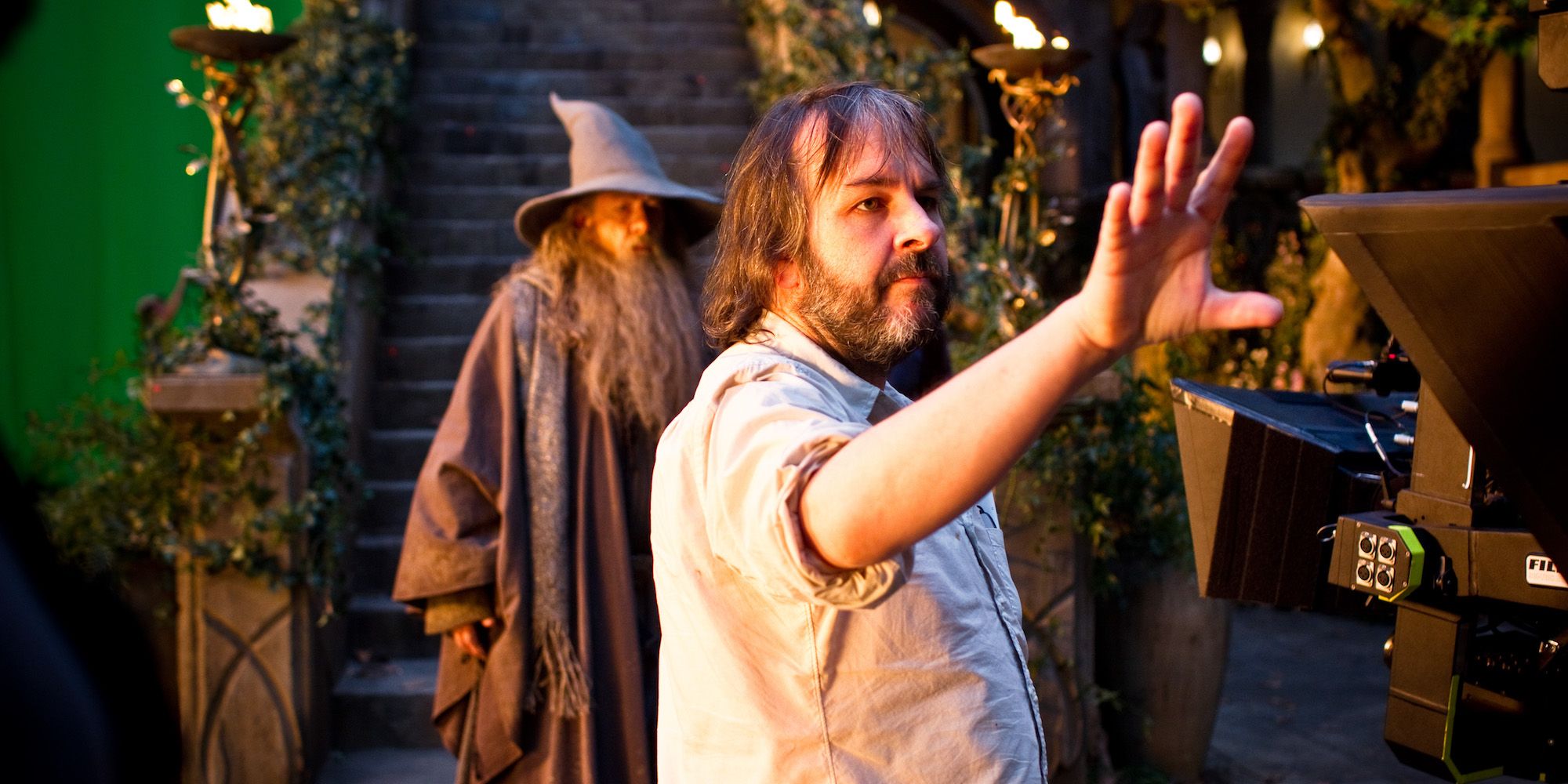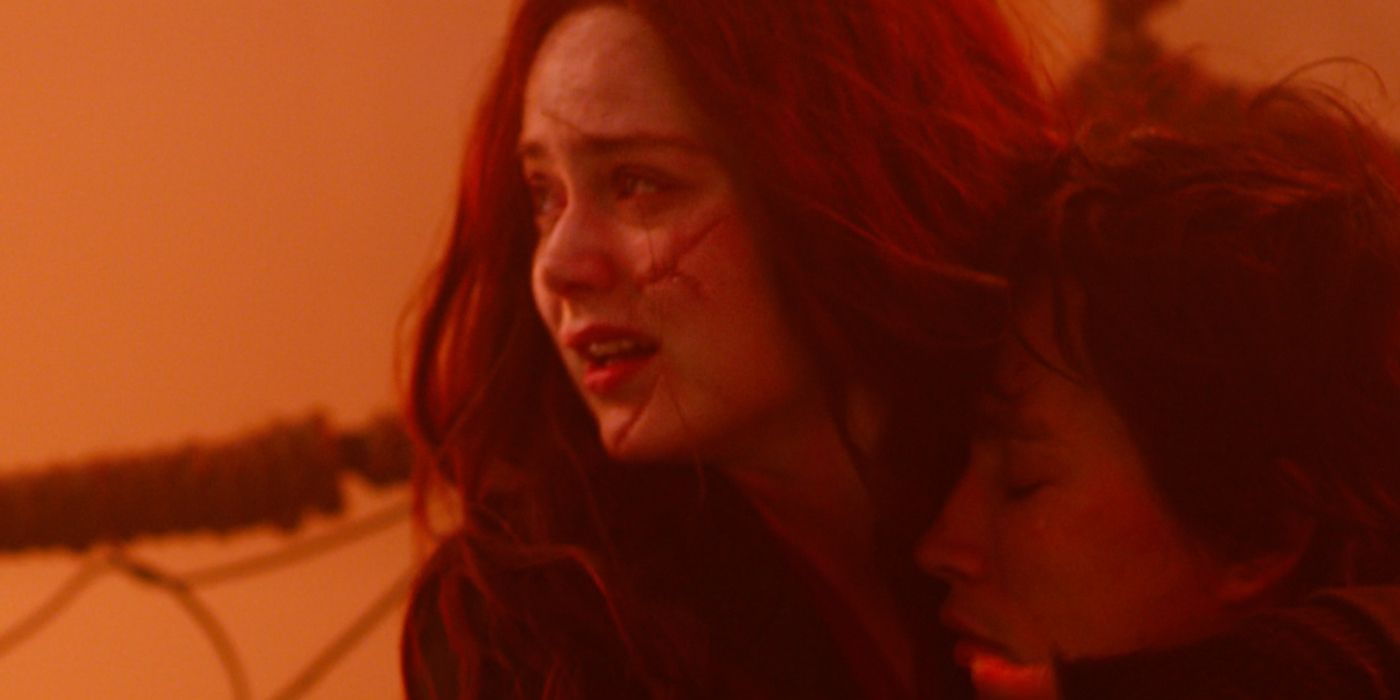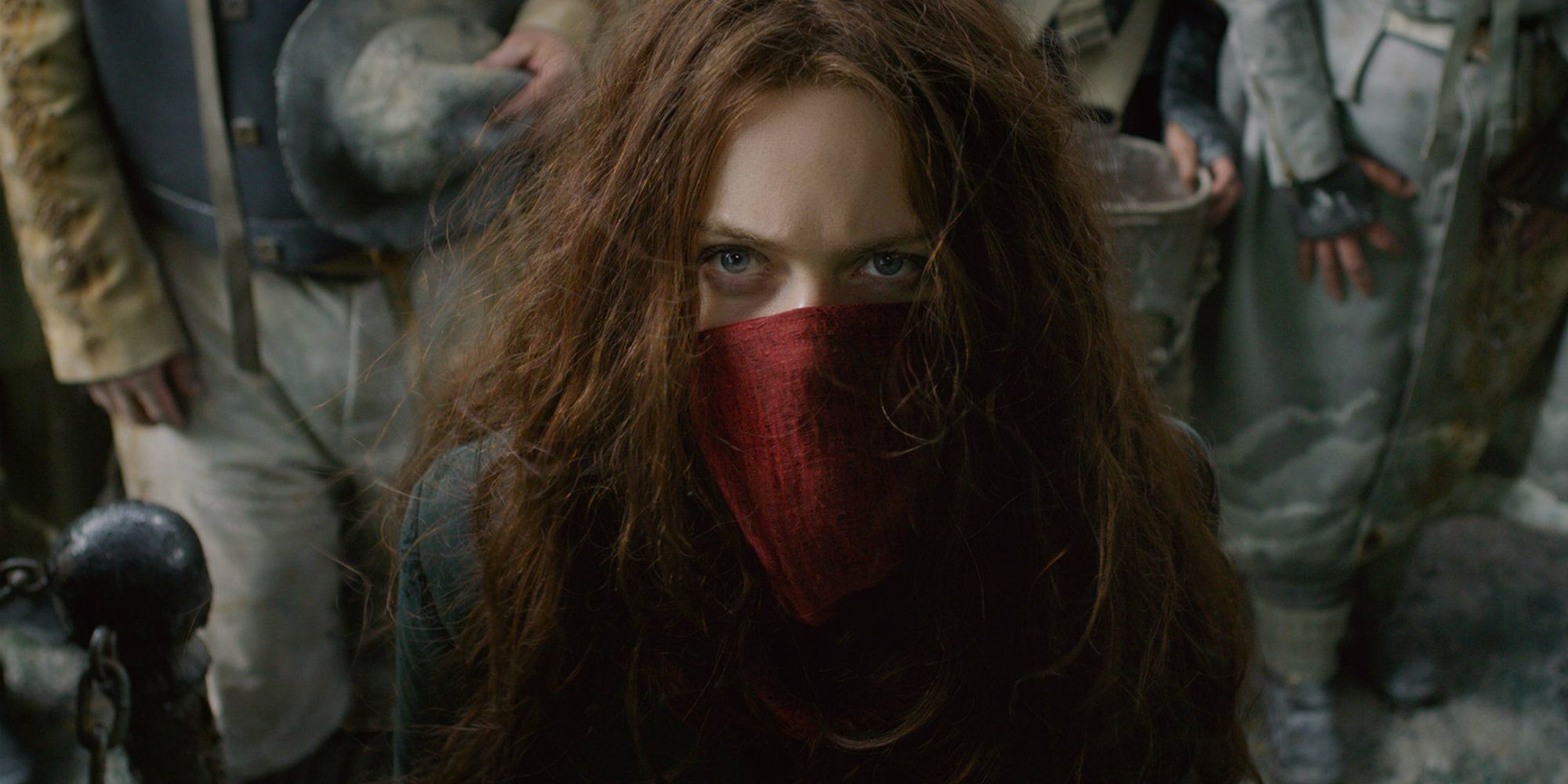Mortal Engines repeated all the mistakes of The Hobbit, and this time paid the price. The Peter Jackson-produced adaptation of Phillip Reeve's young adult novel (directed by Christian Rivers, Jackson's long-time storyboard artist) has become the biggest box office bomb of 2018, with a measly $7.5 million opening weekend see it risk losing up to $150 million for Universal. There's a lot of obvious reasons for this - the marketing never truly won prospective audiences over, there's immense competition this December from a slew of bigger named franchises - but one that's been overlooked is just how similar the whole project is to The Hobbit.
A trilogy of movies spun out of J.R.R. Tolkien's original Middle-earth book (extended by way of The Return of the King's appendices), The Hobbit is very much the Star Wars prequels of the The Lord of the Rings franchise; a series of films anticipated by a whole generation for which the original trilogy was a defining cultural landmark that saw the world collapse under a misguided creative drive. The main complaints at the time were the bloating of a short book into three long movies (the extended cuts total almost 9 hours), but that's just the entry point to a more nuanced discussion of flawed adaptation approach.
Related: Why Mortal Engines Bombed At The Box Office
The comparisons between Mortal Engines and The Hobbit exist long before you get Peter Jackson attached. They're epic fantasies that riff on reality in hitherto unique ways, gradually expanding in scope over the course of their classical story until the very fate of the world hangs in the balance. One's a high fantasy ostensibly set in our very distant past (one aspect of Tolkien's Legendarium that Jackson's films lost is its framing as a creation myth), the other a post-apocalyptic cautionary tale, but both follow similar tracks and are certainly open to a big screen adaptation.
However, there's a question of whether either is suitable for The Lord of the Rings approach to world-building or storytelling. Both The Hobbit and Mortal Engines were, upon release, pegged as the successor to Jackson's groundbreaking trilogy, yet a string of creative decisions led to that not to be the case. In fact, the only thing more startling than how similar they are is that only one of them is viewed as a failure.
- This Page: The Hobbit & Mortal Engines Share An Origin
- Page 2: Where The Hobbit & Mortal Engines Fall Down
- Page 3: Why Mortal Engines Bombed Where The Hobbit Didn't
Mortal Engines & The Hobbit Were Made Out Of Obligation
At the end of the day, moviemaking is a business and so it's rare for a film to not be made for blatant financial purposes. However, every now and then, something comes along that is so delightfully artistically driven. A prime example is The Lord of the Rings trilogy, which is as much the product of Peter Jackson's passion for the material as it was a mission to make billions of dollars; indeed, when shopping the project around Hollywood in the late 1990s, few studios took any interest at all. That it was made unimpeded as a full three movies is nothing short of a miracle, and that they came out in 2001-2003 (as opposed to any other point post-publication) is the direct result of Jackson's drive.
That same force is not there for The Hobbit or Mortal Engines, projects that were once the subject of Jackson's interest but by the time production finally began were more belabored obligations. The Hobbit had a lengthy pre-production when Guillermo del Toro was set to direct a two-parter, but the slow-movement in attaining full rights, financing and production clearance saw him step aside. Unfortunately, by that point too much money had been sunk in the project and Jackson had to step up and make them on a deadline (eventually getting so exhausted he split the second part in two again to make a full trilogy).
Related: The Hobbit's Worst Changes From The Book To The Movies
Mortal Engines hadn't had quite as much money poured into it, but was still very much against the clock. The rights to the book Jackson acquired back in 2008 with the intention for himself to direct were due to expire at the end of 2018, and after The Hobbit put him out of commission until 2014, things were getting tight. It was at this point that Rivers stepped up and the film entered production. And although it had been in development for a decade, most of the designs were overhauled to reflect the passing of the steampunk craze. In the end, the movie may have released mere weeks before the rights lapsed.
The situation with Mortal Engines is nowhere near as fraught as The Hobbit, but that same overbearing sense of time constraint caused by financial considerations was there from the start, and seems to have heavily influenced how the movie was made.
Page 2 of 3: Where The Hobbit & Mortal Engines Fall Down
Mortal Engines & The Hobbit Both Lose Sight Of Story & Character
On a purely technical level, there are definitely aspects to appreciate in both The Hobbit and Mortal Engines. New Zealand Middle-Earth looks great in The Hobbit when it's actually New Zealand (not a computer), and the wasteland of tank-treads Mortal Engines drops the audience into is thrillingly established. There's also something to appreciate in the tactile backdrop, with the real sets that are used standing out as wholly believable, be that Bag-End or the Jenny Haniver. And as a positive nod for Mortal Engines, it must be noted that sets were built considerably higher than average in a bid to minimize the amount of CG-extension needed; St Pauls is (mostly) there in all its glory.
All that said, there's a distinct barrier between the visual effects and the characters' story. The Hobbit and Mortal Engines are trope heavy tales, and it almost feels like that's used as a crutch to let the story take a backseat to wider worldbuilding. Unfortunately, that doesn't just stop there being any greater depth to be had, it completely confuses the plot that's there. It's fundamentally unclear who the protagonist of The Hobbit or Mortal Engines is without wider knowledge: Bilbo Baggins is the title character of the former but has minimal impact on the actual story (by design), while Thorin or any other replacement is too ambiguous for audiences to latch onto; and Tom and Hester vie and fail to truly become the relation point.
Related: Mortal Engines Accidentally Remakes Batman v Superman's Martha Scene
This hang-up is particularly startling given the source narratives. The novels are both highly episodic, with the core heroes going through a series of semi-connected events on the way to a clear endgoal that stack to create a full tapestry of the world. This is a storytelling approach that is tricky to make work on film; it hinges on the audience viewing the protagonist as their avatar, and can be helped by the filmmakers finding a better way to tighten up the strands. Unfortunately, not only do The Hobbit and Mortal Engines confuse who we're meant to relate to, they maintain that episodic structure, which makes following any journeys even trickier. Compare to Jon Favreau's The Jungle Book, which takes the skeleton of the 1967 film (where the narrative is just a pathway to random songs) and creates a proper arc for Mowgli and his protectors; these two Jackson projects essentially do the reverse.
All of this is somewhat inevitable given that both movies started production without a complete script (something Christian Rivers confirmed in our release interview); the direction is driven by sets and locations that were developed years before over pre-production, not narrative or character (who are treated as a given thanks to the source), and over 2+ hours, that begins to stretch. This is likely also why, while there's definitely technical brio on show in creating the world, it never feels like a complete geography; when characters discuss heading east or west, or set a new destination, it's all abstract and lacking distance.
Page 3 of 3: Why Mortal Engines Bombed Where The Hobbit Didn't
Mortal Engines' Storytelling Is Just Like The Hobbit's, But Without Lord of the Rings Nostalgia
Of course, what's so striking about the comparisons between The Hobbit and Mortal Engines is that, for all the objective similarities, their at-a-glance measured success is entirely different. Mortal Engines is a box office bomb so embarrassing it makes Solo: A Star Wars Story look solvent, while The Hobbit movies collectively made almost $3 billion worldwide and received mixed-to-positive reviews (only The Battle of the Five Armies has a Rotten score on Rotten Tomatoes, and that's narrowly so at 59%). However, that says less about measurable difference or even depreciating interest (although the latter is key from a marketing standpoint) than it does audience expectation.
The Hobbit primarily gets by on its relationship to The Lord of the Rings, both the cultural cache of the original source book and moreover the visual stylings of the films. This no doubt helped Jackson with the rushed production - a lot of the world design has already been done - but it also gives the film a distinct advantage in finding an audience. After all, while the nostalgia may be obvious, repeated use of Howard Shore's instant-classic themes, returning to well-liked Rings locations (Azog and his orcs based at Weathertop), and extended cameos and namedrops from known faces go a long way to endearing and entertaining an audience. By the time of The Battle of the Five Armies, this reliance on Rings story to pad out The Hobbit - Legolas got a front-and-center love triangle, Gandalf's mission to Dol Guldur to fight the Necromancer aka Sauron was used to frame Bilbo's tale as a turning point for the realm - was getting roundly criticized, but it nevertheless made for cozy viewing.
Related: The Most Brutal Reviews of Peter Jackson's Mortal Engines
Mortal Engines has no such cushion. The books were popular for a time but few fans today are clamoring for a live-action take, and its mainstream impact is even less than that. This could be felt in the marketing, where the teaser trailer - released a year in advance - teased the approach of predator city London with the weight of a Hobbiton or a Smaug, but received only confusion and titters. It's in the movie, though, where it's felt most; the story unfolds with concepts and places that only flow if you have some pre-built affection for them. That assumed intertextual knowledge is what kept The Hobbit above water as it went through production rapids, and unfortunately the barrels are all broken now.
-
What these two movies show, ultimately, is The Lord of the Rings is not a model or formula for artistic or financial success. Those three films were the critical, commercial, audience and awards successes they became because the epic fantasy storytelling approach was a necessity for something so sprawling and intricate. Now, The Hobbit or Mortal Engines could have worked in this way had there been a constant creative drive dictating decisions throughout the production, but the feeling is more that the films were made this way as a shortcut; following Rings' lead was no different to an MCU origin story taking the Iron Man blueprint.
While there have been attempts to reimagine and find the good in The Hobbit (Topher Grace recently cut the trilogy into one flowing movie after his time on BlacKkKlansman), there are fewer options available for Mortal Engines given the lack of material (and, from the box office, interest in seeing the more narratively diverse sequels adapted). Hopefully, these lessons will be learned by whatever comes next from Peter Jackson.




